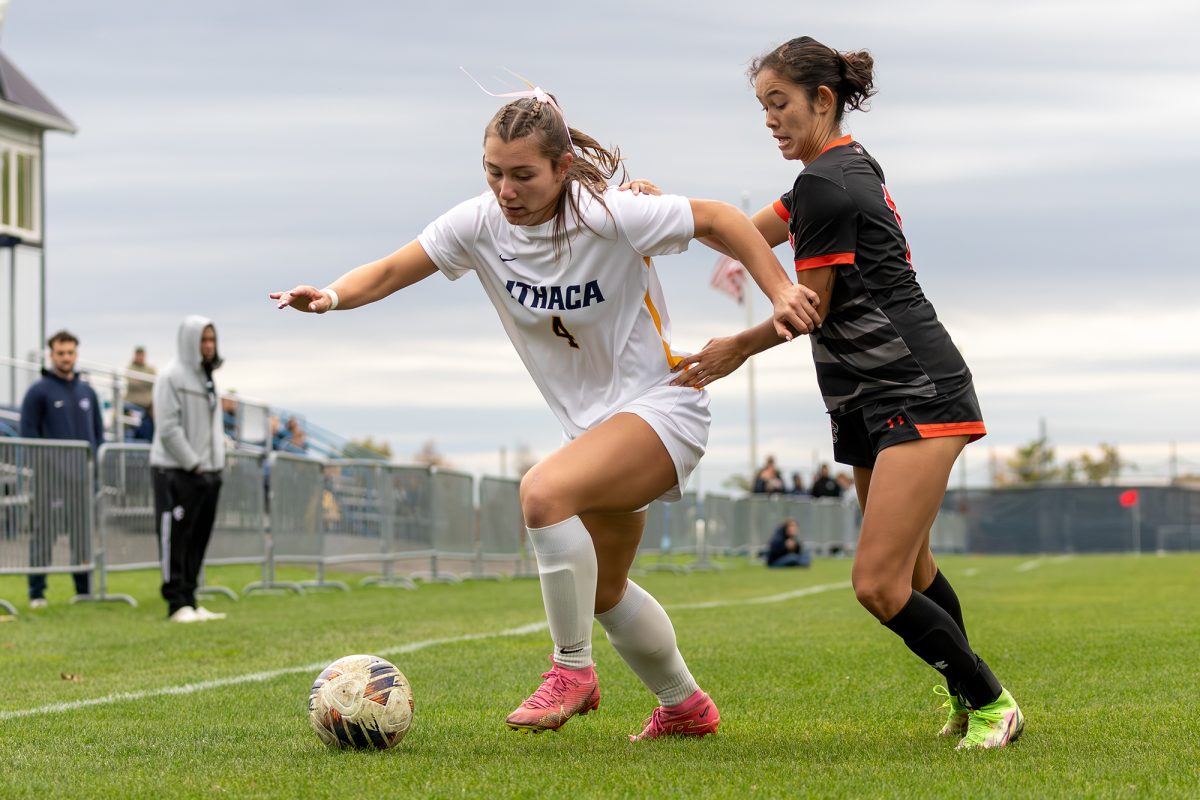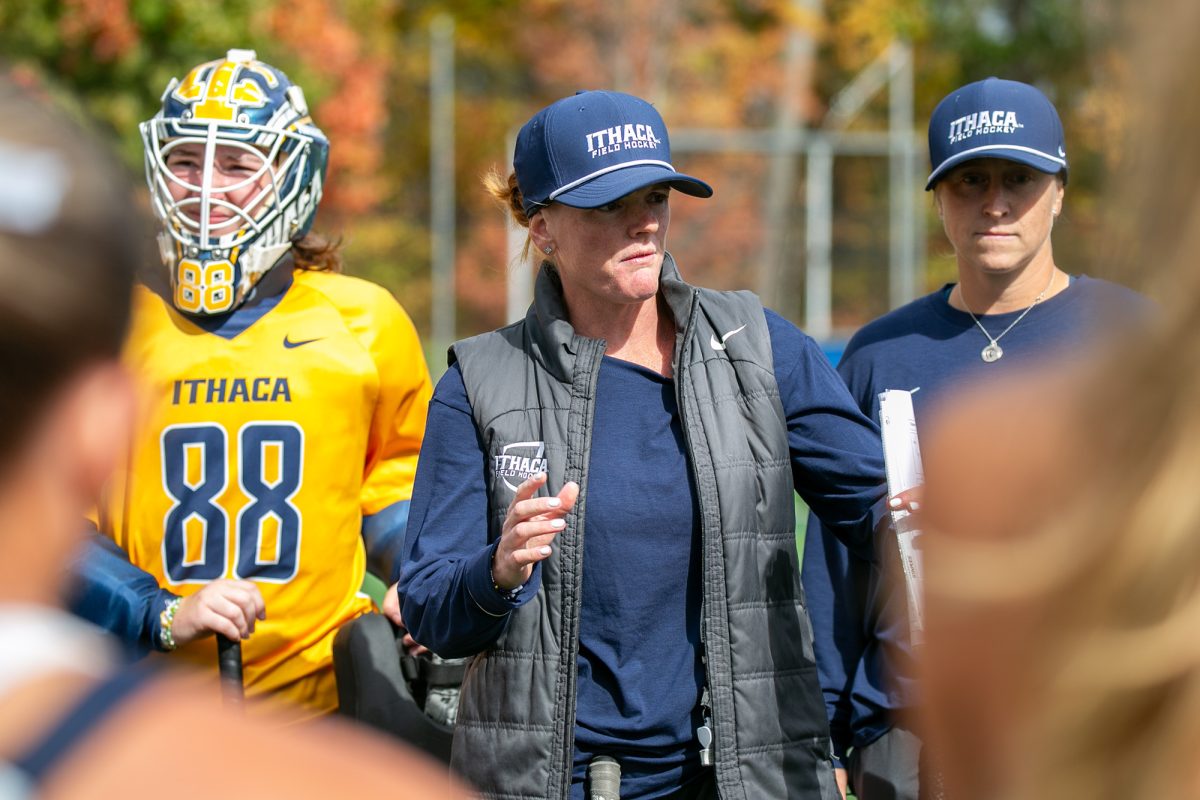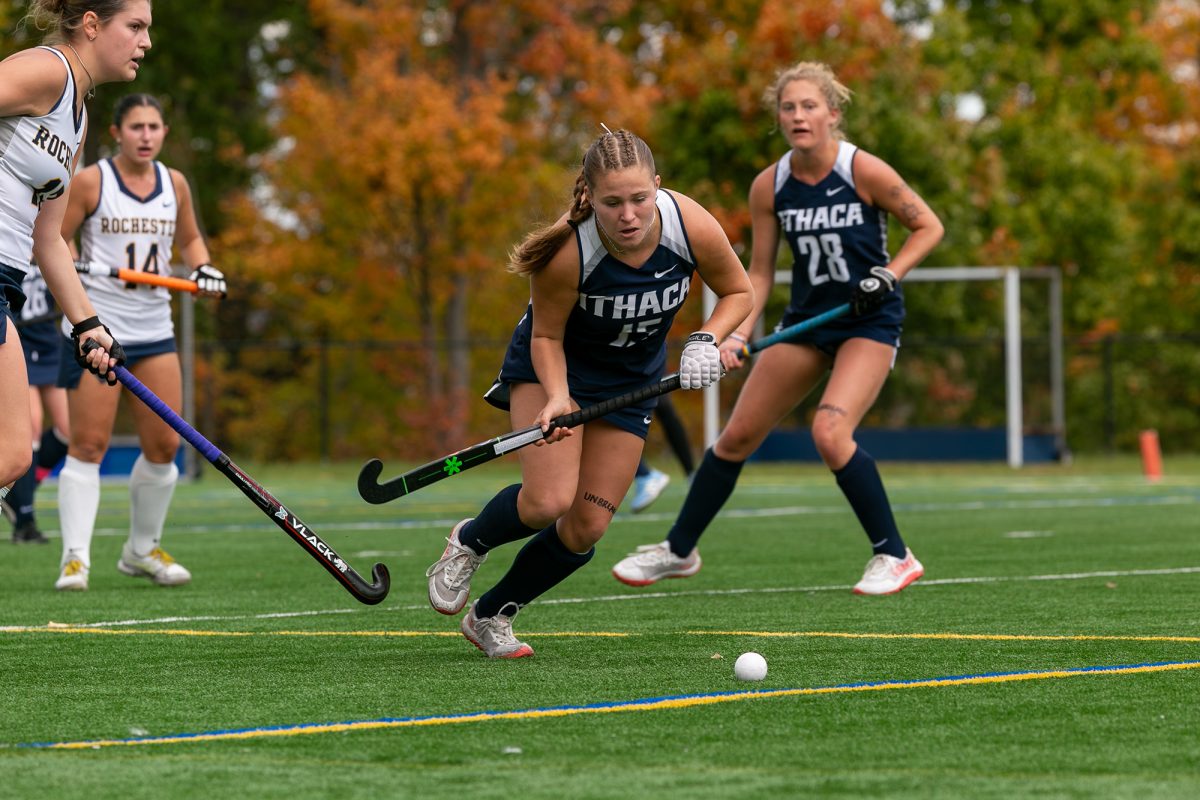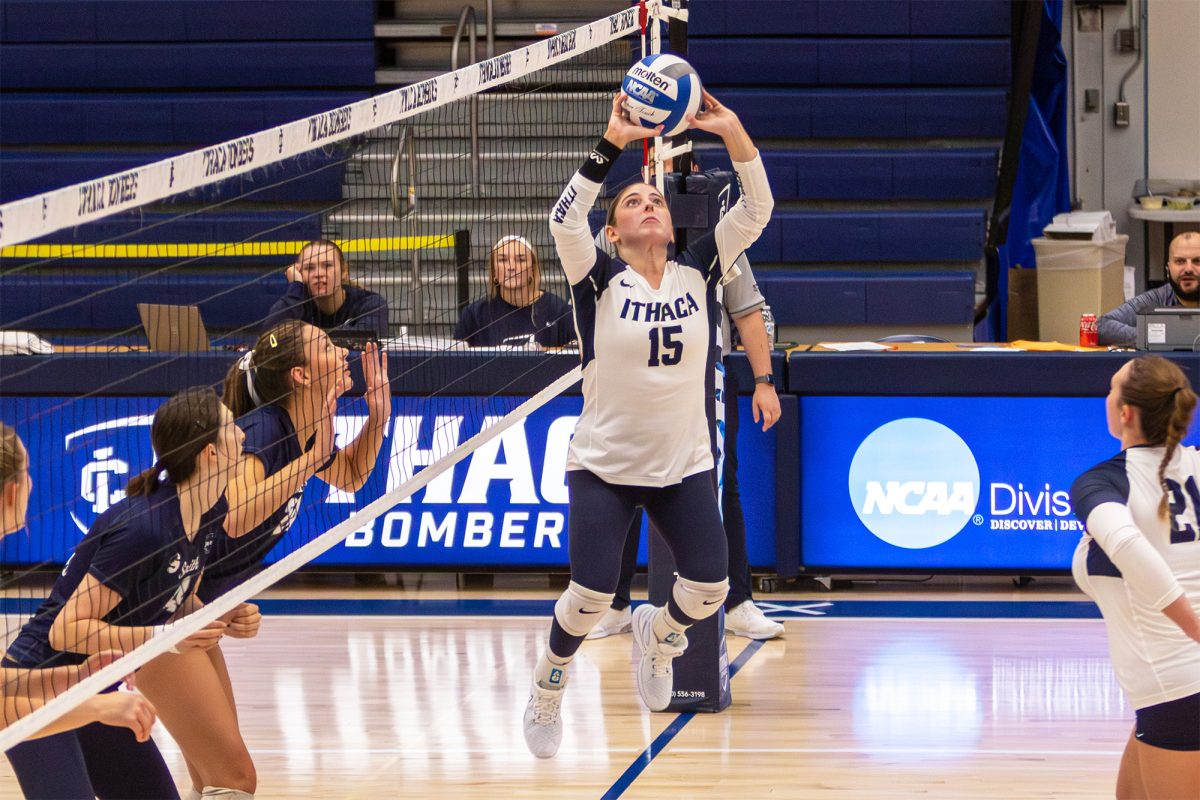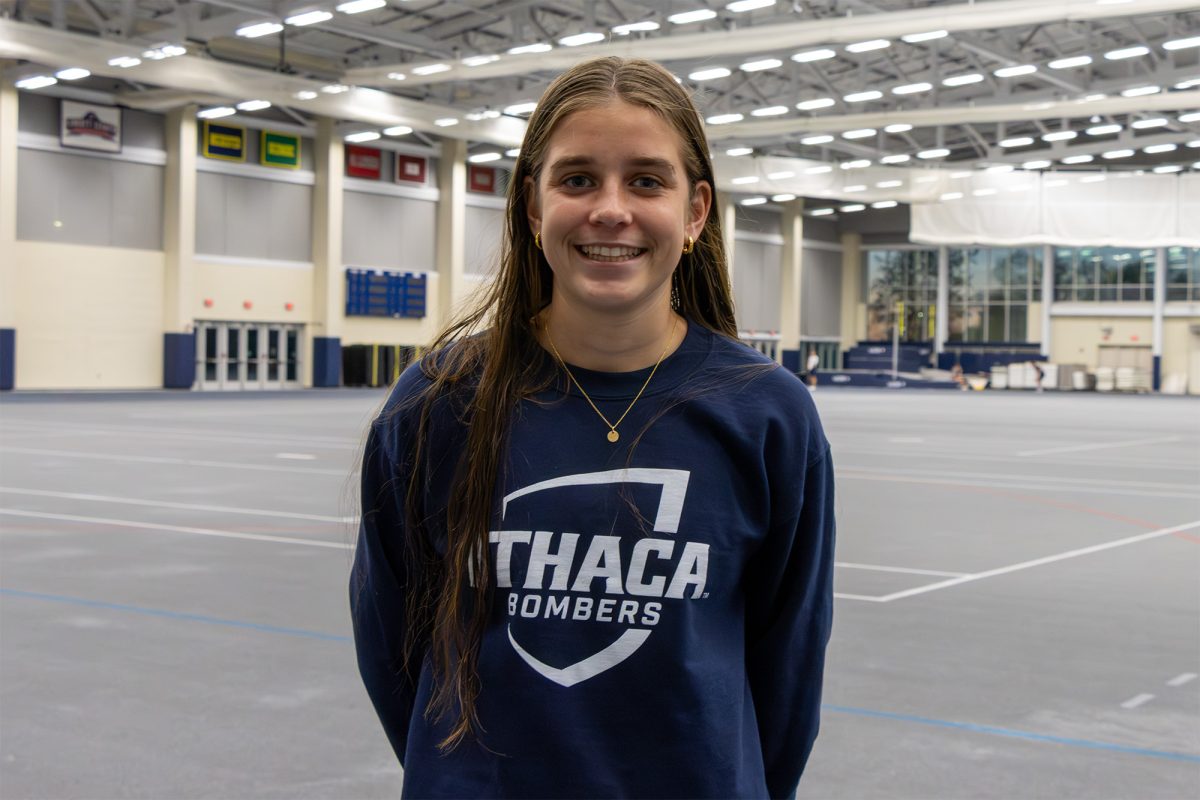Everyone knows all about the Cortaca Jug, but what about the Mayor’s Bat? The prize for the former annual series between the Bombers and Cornell baseball team sits untouched in the Athletics and Events Center trophy case, a victim not of a loss of competitive balance or a desire to compete, but Ivy League politics.
The Bombers and the Big Red had a long-running rivalry dating all the way back to the 1930s. In 1977, then-Cornell Head Coach Ted Thoren ’49 decided to up the ante, energizing the rivalry by adding a traveling trophy. The trophy, a wooden baseball bat, was dubbed “The Mayor’s Bat,” and the rivalry took on the moniker as well.
The crosstown series was scheduled late in the season when the weather in Ithaca finally became suitable to enjoy a baseball game, and the Mayor’s Bat series would bring in some of the biggest crowds for the college and Cornell when they hosted the game. Bombers Head Coach George Valesente, who coached in all of the Mayor’s Bat games, said the series with Cornell was a highlight of every season.
“The games would be battles,” he said. “The players would go after each other pretty good. You’re in the same town. They weren’t fond of us, and we weren’t fond of them.”
Despite playing a Division I opponent, the Bombers dominated the series. In the 18 years the bat was played for, the Blue and Gold won 10 bats, while Cornell won just five. Three of the games were ties.
Thoren retired in 1990 and was replaced by Tom Ford ’79, who played for Valesente in the late ’70s. The annual series continued, but Valesente said scheduling became a constant struggle.
After the 1996 series, a 1-1 tie, Valesente was informed without explanation that the series would not be played the next year, and the trophy hasn’t been awarded since.
“He never told me exactly why we stopped playing,” Valesente said.
Ford, now the associate head coach at Cornell, said two policy changes, one from the Ivy League and one from the Cornell administration, doomed the Mayor’s Bat.
First, the Ivy League made a considerable push for their teams to schedule as many out-of-conference Division I opponents as possible to improve the league’s “power rating.” The more high-powered teams Ivy League teams play, the higher the league’s power rating is.
Second, the series was traditionally played during Cornell’s “study period” between the end of classes and finals, but the university made it a policy that no athletic contest could take place during the study period, closing the small window that Cornell left to fit the game into its tight schedule.
The Bombers and Cornell have faced off once in recent years, a 2010 game that Cornell won 11-7, but it was not for the Mayor’s Bat. It is a shame that a passionate rivalry has fizzled out because of a few administrative problems. Coach Valesente said the Bombers would be all for restarting the series as one game a year playoff, but unfortunately the ball is on the bat of Cornell, and it seems likely to stay there.


